Title search results
Showing 1 - 8 of 8 items
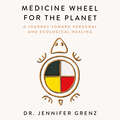
Medicine Wheel for the Planet: A Journey toward Personal and Ecological Healing
By Dr Jennifer Grenz. 2024
A farm kid at heart, and a Nlaka'pamux woman of mixed ancestry, Dr. Jennifer Grenz always felt a deep connection…
to the land. Which is why, after nearly two decades of working as a restoration ecologist in the Pacific Northwest, she became frustrated that she and her colleagues weren't making the meaningful change needed for plant, animal and human communities to adapt to a warming climate. She began to question the central conceit of restoration ecology: that somehow, we must return the natural world to an untouched, pristine state, placing humans in a godlike role—a notion at odds with Indigenous histories of purposeful, reciprocal interaction with the environment. This disconnect sent Dr. Grenz on a journey of joining her head (Western science) and her heart (Indigenous worldview) to find a truer path toward ecological healing. In Medicine Wheel for the Planet, building on sacred stories, field observation and personal experience, Dr. Grenz invites readers to share in the teachings of the four directions of the medicine wheel: the North, which draws upon the knowledge and wisdom of elders; the East, where we let go of colonial narratives and see with fresh eyes; the South, where we apply new-old worldviews to envision a way forward; and the West, where a relational approach to land reconciliation is realized. Eloquent, inspiring and disruptive, Medicine Wheel for the Planet circles in on an argument that a multiplicity of worldviews are required to safeguard our Earth.
Bannock in a hammock
By Masiana Kelly. 2024
"Big or small, sweet or savoury, with stew or with sprinkles, there are tons of ways to enjoy bannock! This…
rhyming book explores a favourite Inuit food, and has some fun along the way. What’s your favourite way to eat bannock? Try it at home with the included bannock recipe! Written by Inuk/Dene writer Masiana Kelly, this sweet and simple narrative celebrates this delicious food."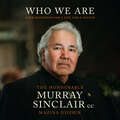
Who We Are: Four Questions For a Life and a Nation
By Murray Sinclair. 2024
Named a Book to Read This Fall by CBC Books and the Toronto Star • One of Indigo’s Most Anticipated…
BooksJudge, senator, and activist. Father, grandfather, and friend. This is Murray Sinclair’s story—and the story of a nation—in his own words, an oral history that forgoes the trappings of the traditionally written memoir to center Indigenous ways of knowledge and storytelling. As Canada moves forward into the future of Reconciliation, one of its greatest leaders guides us to ask the most important and difficult question we can ask of ourselves: Who are we?For decades, Senator Sinclair has fearlessly educated Canadians about the painful truths of our history. He was the first Indigenous judge in Manitoba, and only the second Indigenous judge in Canadian history. He was the Chair of the Truth and Reconciliation Commission, and remains one of the foremost voices on Reconciliation. And now, for the first time, he shares his full story—and his full vision for our nation—with readers across Canada and beyond.Drawing on Senator Sinclair’s perspectives regarding Indigenous identity, human rights, and justice, Who We Are examines the roles of history, resistance, and resilience in the pursuit of finding a path forward, one that heals the damaged relationship between Indigenous and non-Indigenous peoples in Canada. In doing so, it reveals Senator Sinclair’s life in a new and direct way, exploring how all of these unique experiences have shaped him as an Anishinaabe man, father, and grandfather.Structured around the four questions that have long shaped Senator Sinclair’s thinking and worldview—Where do I come from? Where am I going? Why am I here? Who am I?—Who We Are takes readers into the story of his remarkable life as never before, while challenging them to embrace an inclusive vision for our shared future.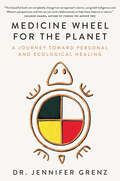
Medicine Wheel for the Planet: A Journey toward Personal and Ecological Healing
By Dr Jennifer Grenz. 2024
"This beautiful book can completely change how we approach science, using both Indigenous and Western perspectives, and how we can…
work collaboratively to help foster balance in nature." —Suzanne Simard, bestselling author of Finding the Mother TreeA farm kid at heart, and a Nlaka'pamux woman of mixed ancestry, Dr. Jennifer Grenz always felt a deep connection to the land. However, after nearly two decades of working as a restoration ecologist in the Pacific Northwest, she became frustrated that despite the best efforts of her colleagues and numerous volunteers, they weren't making the meaningful change needed for plant, animal and human communities to adapt to a warming climate. Restoration ecology is grounded in an idea that we must return the natural world to an untouched, pristine state, placing humans in a godlike role—a notion at odds with Indigenous histories of purposeful, reciprocal interaction with the environment. This disconnect sent Dr. Grenz on a personal journey of joining her head (Western science) and her heart (Indigenous worldview) to find a truer path toward ecological healing.In Medicine Wheel for the Planet, building on sacred stories, field observations and her own journey, Dr. Grenz invites readers to share in the teachings of the four directions of the medicine wheel: the North, which draws upon the knowledge and wisdom of elders; the East, where we let go of colonial narratives and see with fresh eyes; the South, where we apply new-old worldviews to envision a way forward; and the West, where a relational approach to land reconciliation is realized. Eloquent, inspiring and disruptive, Medicine Wheel for the Planet circles toward an argument that we need more than a singular worldview to protect the planet and make the significant changes we are running out of time for.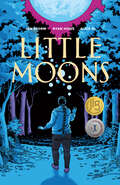
Little Moons
By Jen Storm. 2024
In this moving graphic novel, thirteen-year-old Reanna grieves the loss of her older sister. Can she find comfort through her…
family&’s Ojibwe traditions? It&’s been a year since Reanna&’s sister, Chelsea, went missing on her way home from school. Without any idea of what happened, Reanna and her family struggle to find closure. Driven from her home by memories, Reanna&’s mom moves to the big city. Left behind on the reserve, Reanna and her little brother go to live with their dad. Reanna is hurt and angry that her mom has run away. She feels lonely and abandoned…but she is not alone. Lights turn on in empty rooms, and objects move without being touched. There are little moons everywhere.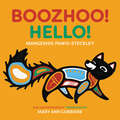
Boozhoo! / Hello!
By Mangeshig Pawis-Steckley. 2024
Hello! Who do you see and hear in the woods today? Meet a variety of woodland and water animals in…
this story written in Anishinaabemowin and English. Can you see a fox digging, spot two minnows dancing or hear a swarm of bees buzzing? Boozhoo! / Hello! introduces children to familiar animals as they go about their daily activities: walking, running, swimming, climbing and finally — when the day is done — sleeping! Illustrated in a vibrant and colorful Woodland style that will appeal to readers young and old alike, and accompanied by an author’s note. Key Text Features Author’s note translations illustrations Correlates to the Common Core State Standards in English Language Arts: CCSS.ELA-LITERACY.RL.1.3 Describe characters, settings, and major events in a story, using key details. CCSS.ELA-LITERACY.RL.1.7 Use illustrations and details in a story to describe its characters, setting, or events.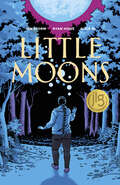
Little Moons
By Jen Storm. 2024
In this moving graphic novel, thirteen-year-old Reanna grieves the loss of her older sister. Can she find comfort through her…
family&’s Ojibwe traditions? It&’s been a year since Reanna&’s sister, Chelsea, went missing on her way home from school. Without any idea of what happened, Reanna and her family struggle to find closure. Driven from her home by memories, Reanna&’s mom moves to the big city. Left behind on the reserve, Reanna and her little brother go to live with their dad. Reanna is hurt and angry that her mom has run away. She feels lonely and abandoned…but she is not alone. Lights turn on in empty rooms, and objects move without being touched. There are little moons everywhere.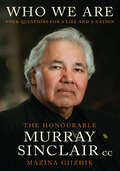
Who We Are: Four Questions For a Life and a Nation
By Murray Sinclair. 2024
Named a Book to Read This Fall by CBC Books and the Toronto Star • One of Indigo&’s Most Anticipated…
BooksJudge, senator, and activist. Father, grandfather, and friend. This is Murray Sinclair&’s story—and the story of a nation—in his own words, an oral history that forgoes the trappings of the traditionally written memoir to center Indigenous ways of knowledge and storytelling. As Canada moves forward into the future of Reconciliation, one of its greatest leaders guides us to ask the most important and difficult question we can ask of ourselves: Who are we?For decades, Senator Sinclair has fearlessly educated Canadians about the painful truths of our history. He was the first Indigenous judge in Manitoba, and only the second Indigenous judge in Canadian history. He was the Chair of the Truth and Reconciliation Commission, and remains one of the foremost voices on Reconciliation. And now, for the first time, he shares his full story—and his full vision for our nation—with readers across Canada and beyond.Drawing on Senator Sinclair&’s perspectives regarding Indigenous identity, human rights, and justice, Who We Are examines the roles of history, resistance, and resilience in the pursuit of finding a path forward, one that heals the damaged relationship between Indigenous and non-Indigenous peoples in Canada. In doing so, it reveals Senator Sinclair&’s life in a new and direct way, exploring how all of these unique experiences have shaped him as an Anishinaabe man, father, and grandfather.Structured around the four questions that have long shaped Senator Sinclair&’s thinking and worldview—Where do I come from? Where am I going? Why am I here? Who am I?—Who We Are takes readers into the story of his remarkable life as never before, while challenging them to embrace an inclusive vision for our shared future.